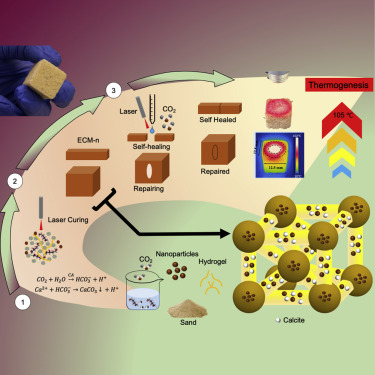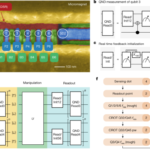2022-09-13 アメリカ合衆国・ウースター工科大学(WPI)

・ WPI は、ネガティブエミッションで低コストの「生きた」材料である、酵素建築材料(Enzymatic
Construction Material: ECM)の改善と新機能の開発において、米国立科学財団(NSF)より 692,396 ドルの研究資金を受領。
・ 気候変動の主要因の一つであるコンクリートの課題に対処し、従来コンクリートの修復や将来のコンクリート代替への道筋を提供し、ECM の実用化を促進する。
・ WPI の Office of Technology Commercialization を通じて設立したスタートアップの Enzymatic, Inc.が、開発した ECM の商業化に取り組む。
・ 新たな研究資金により、メガネレンズ、携帯電話のスクリーンや自動車のウインドシールド等の多種類のガラス材料の亀裂の修復を含む、ECM の新しい利用方法の開発に挑む。
・ また、ウースター市とアフリカの貧困家庭の女子児童に向けた、ジェンダーギャップの問題が根強く残るエンジニアリングと建築分野での教育プログラムの展開を目指す。
・ 世界のセメント生産量は、1995~2020 年の間に 13.9 億トンから 40.1 億トンに跳ね上がり、地球上で水の次に大量に消費される物質となっている。今回の研究資金は、コンクリート生産による気候変動緩和の支援に加え、ECM とその製造プロセスの改良と最適化、また多様な材料への ECM の利用拡大に充てられる。
・ ECM は、あらゆる生体細胞に見られる、炭酸脱水酵素(carbonic anhydrase:)として知られる酵素の
働きによるプロセスを通じて作製される。同酵素は、CO2 と反応して空気中から除去する特殊な機能を有する。
・ 炭素脱水酵素と CO2 との反応により、ECM の主要構成物質となる炭酸カルシウム結晶が形成され、添加した砂スラリーやポリマーに結合して固体材料となる。ECM は、経時的に発生する亀裂や欠陥の自己修復と強度維持を 6 回まで繰り返すことが可能。
・ ECM の試験や実験では、圧縮材としてビル建設に利用できる、モルタルに匹敵する卓越した圧縮強度を確認。レンガのような高温度での焼成も不要で、硬化に 28 日間を要するコンクリートとは異なり迅速に製造できる。また、酵素含有量が微量のためコストを低く抑えられる。
URL: https://www.wpi.edu/news/wpi-researchers-receive-new-funding-sustainable-concrete-substitute
<NEDO海外技術情報より>
関連情報
Cell Reports Physical Science 掲載論文(フルテキスト)
Curing and self-healing of enzymatic construction materials using nanoparticles
URL: https://www.sciencedirect.com/science/article/pii/S2666386422003332?via%3Dihub
Highlights
- •Introduction of curing method that allows for on-site fabrication
- •Nanoparticles reduce the curing period in a recently developed ECM-n
- •Curing can be carried out using a low-power laser or other light sources
- •ECM-n can be used as a multifunctional thermal element
Summary
Preparation of construction materials on site may offer advantages in transportation and storage. However, a major limitation of on-site preparation of some materials is the need for heat and oven desiccation for adequate curing. Here, we describe a method that allows rapid curing under ambient conditions through the addition of 0.1% iron oxide nanoparticles to a carbon-negative enzymatic construction material (ECM) to make ECM-n. Specifically, we show that a low-power laser (3W at 808 nm) can cure ECM-n to an optimal mechanical strength in 12 h, which can be compared to the 14-day period needed for in situ air drying. In addition, the incorporation of nanoparticles allows rapid self-healing of large-scale flaws and that incandescent light can be used if lasers are not available. This method establishes an on-site manufacturing capability for ECM-n and other construction materials and supports thermal controllability of the local structure in low-temperature regions.




